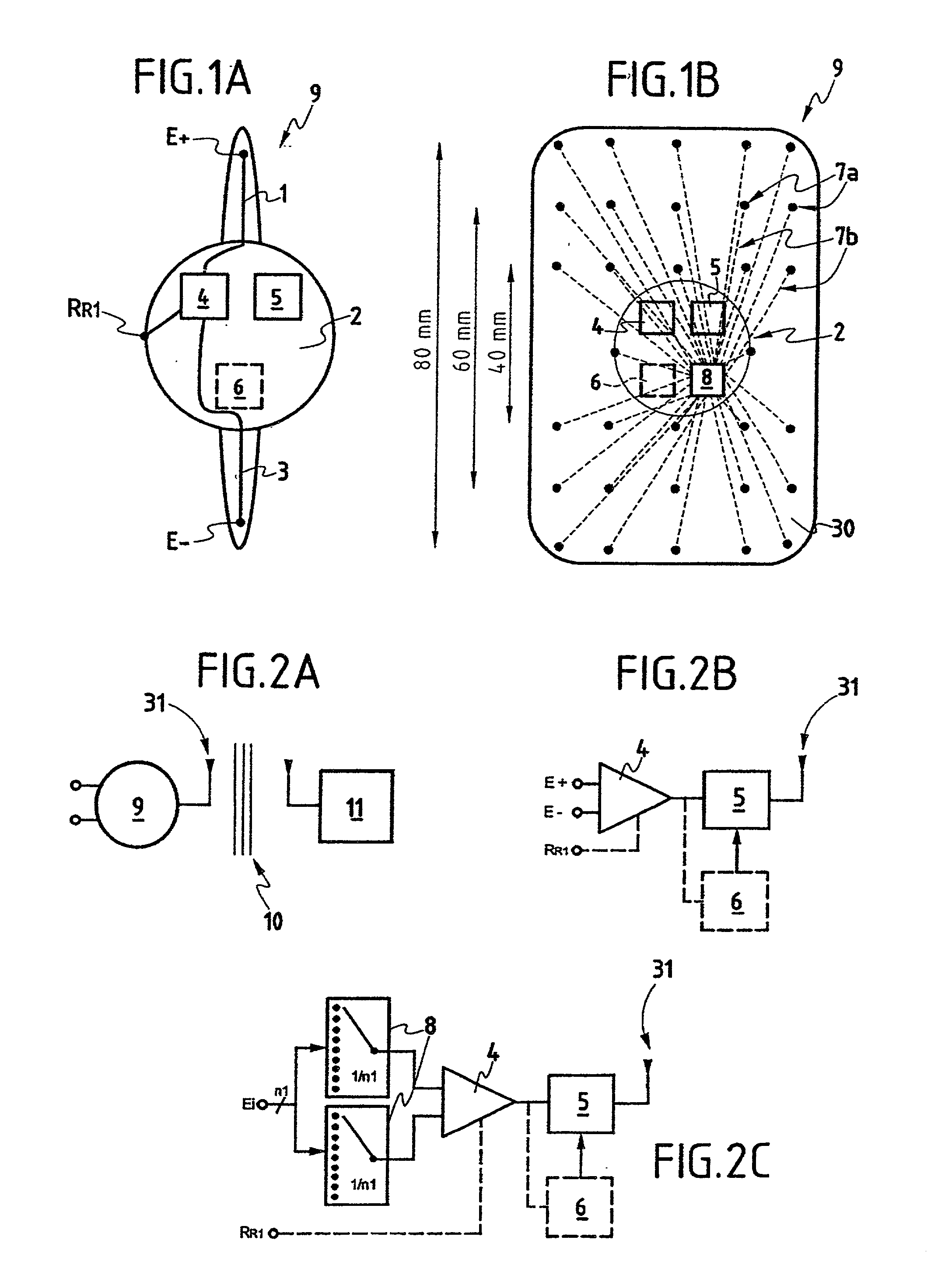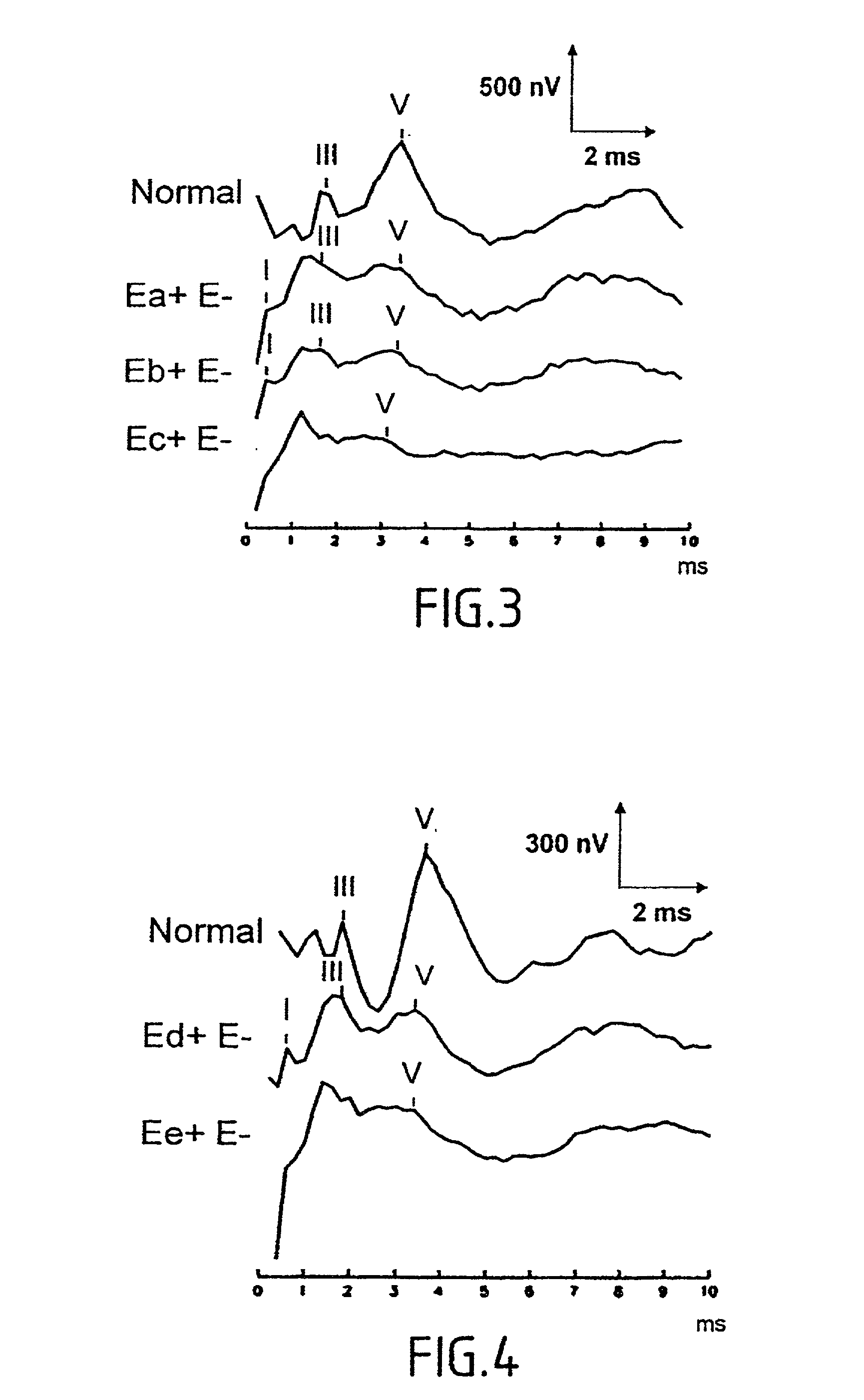Method and apparatus for picking up auditory evoked potentials
- Summary
- Abstract
- Description
- Claims
- Application Information
AI Technical Summary
Benefits of technology
Problems solved by technology
Method used
Image
Examples
Embodiment Construction
[0051] FIG. 1A shows an implantable device that makes it possible firstly to pick up biological electrical signals characteristic of auditory evoked potentials, and to do so via positive and negative pickup electrodes (E+ and E-) connected via representative wireless 1 and 3 to an amplifier module 4 contained in a sealed package 2, and secondly to transmit these signals, or signals derived therefrom, to the outside of the body via a transmitter module 5 contained in the package 2, with this being done at radio frequency. A coil or antenna 31 of the transmitter module 5 can equally well be inside or outside the package 2. The package contains an optional signal processor module 6. In this case, the reference electrode (RR) is fixed to the package and is used to make it possible to perform differential amplification between the two pickup electrodes. The power required to operate the implant can either come from an implant cell or battery, or else it can be transmitted via an external...
PUM
 Login to View More
Login to View More Abstract
Description
Claims
Application Information
 Login to View More
Login to View More - R&D
- Intellectual Property
- Life Sciences
- Materials
- Tech Scout
- Unparalleled Data Quality
- Higher Quality Content
- 60% Fewer Hallucinations
Browse by: Latest US Patents, China's latest patents, Technical Efficacy Thesaurus, Application Domain, Technology Topic, Popular Technical Reports.
© 2025 PatSnap. All rights reserved.Legal|Privacy policy|Modern Slavery Act Transparency Statement|Sitemap|About US| Contact US: help@patsnap.com



